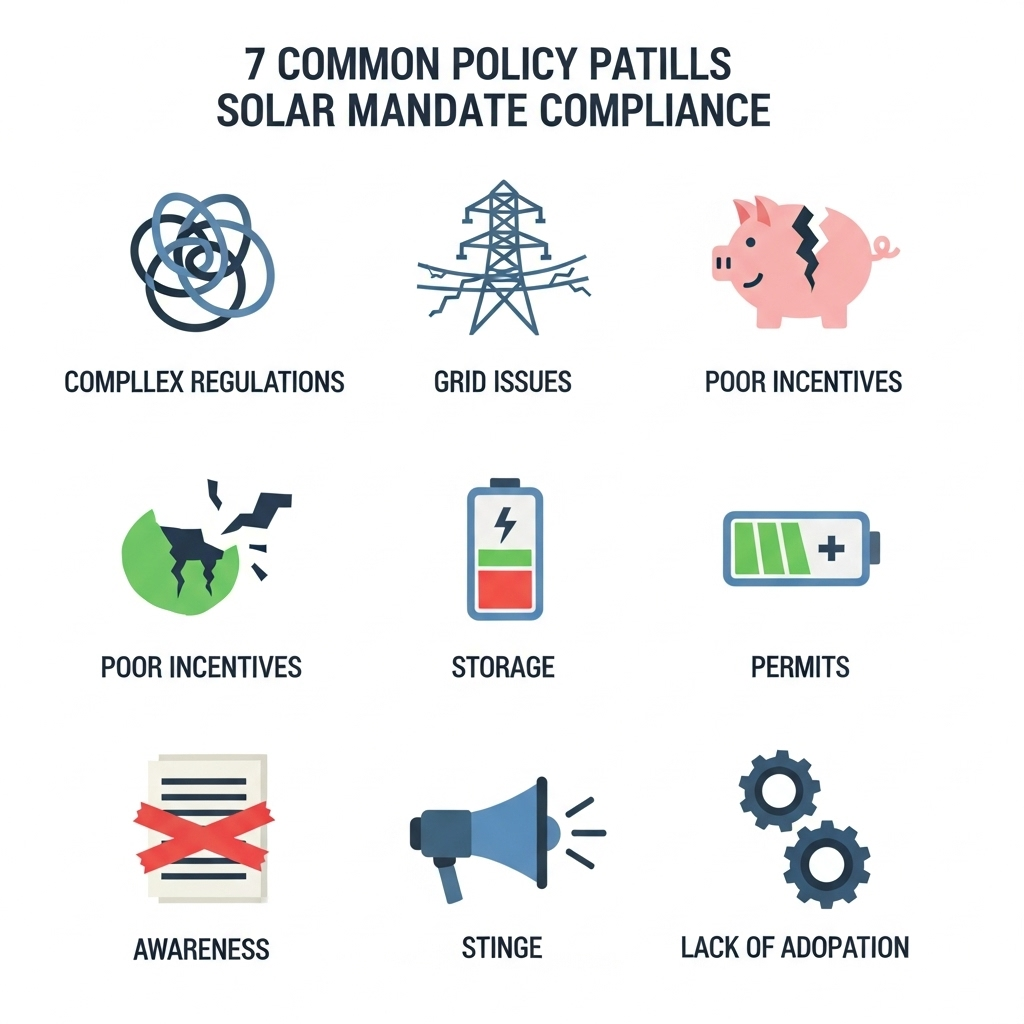The transition to renewable energy is accelerating, driven by ambitious policies, technological advancements, and a collective push for a more sustainable grid. As we look toward 2025, several key trends are defining the future of power generation. Understanding Renewable Portfolio Standards (RPS), solar capacity growth, and the expanding role of energy storage is crucial for homeowners, businesses, and industry stakeholders aiming to navigate this dynamic landscape.
Decoding Renewable Portfolio Standards (RPS) in 2025
Policy is a powerful catalyst for renewable energy adoption. At the forefront are Renewable Portfolio Standards, which set the pace for clean energy integration across the United States.
What Are RPS and Why Do They Matter?
An RPS is a state-level regulation that requires utilities to generate a specific percentage of their electricity from renewable sources by a certain date. These mandates create a stable, long-term market for clean energy technologies like solar and wind. By setting clear targets, RPS policies stimulate investment, drive innovation, and are fundamental to achieving state and national decarbonization goals. They are the foundational policy tool pushing the energy transition forward.
Key RPS Trajectories and Policy Shifts
Looking to 2025, many states are not just maintaining their RPS targets; they are making them more ambitious. We are seeing a trend of increased percentages and accelerated timelines. Furthermore, policies are evolving in complexity. Some states are introducing 'carve-outs' that mandate a specific portion of the renewable energy goal must come from solar power or be supported by energy storage systems. According to research from the International Renewable Energy Agency (IRENA), favorable regulatory frameworks are critical for promoting the deployment of advanced energy solutions, including long-duration storage, especially in markets with high renewable penetration.
Projecting Solar Capacity Growth
Solar power continues its impressive growth trajectory, becoming a cornerstone of the global energy mix. Several factors are contributing to this expansion, making solar more accessible and cost-effective than ever before.
The Driving Forces Behind Solar Expansion
The primary driver for solar's expansion is its declining cost. The Levelized Cost of Energy (LCOE) for utility-scale solar PV has fallen dramatically over the past decade, making it one of the most affordable sources of new electricity generation. An IRENA report, Renewable Power Generation Costs in 2024, highlights a significant LCOE decline between 2010 and 2024. This cost reduction, combined with continuous improvements in photovoltaic (PV) panel efficiency and manufacturing scale, fuels rapid adoption.
Utility-Scale vs. Distributed Solar
Solar capacity growth is happening on two fronts: large, centralized utility-scale solar farms and smaller, decentralized distributed solar systems. Utility-scale projects can generate hundreds of megawatts of power, feeding it directly into the grid. Distributed solar, which includes residential rooftop panels and local community solar projects, empowers consumers to generate their own power. This distributed generation is growing rapidly. For instance, supportive city-level policies helped New York City surpass 800 megawatts of installed solar capacity, as detailed in an EERE Success Story.
The Pivotal Role of Energy Storage
As solar and wind power become more prevalent, their intermittent nature presents a challenge to grid stability. Energy storage is the key technology that addresses this, ensuring a reliable supply of clean power around the clock.
Why Storage is a Necessity
Energy storage systems, particularly batteries, capture excess solar energy generated during peak daylight hours. This stored energy can then be dispatched during the evening, on cloudy days, or whenever demand exceeds generation. This capability transforms intermittent renewables into a firm, dependable power source. As IRENA notes, storage technologies enhance system stability and flexibility by balancing supply and demand, a strategic role reflected in its sharp deployment growth in recent years.
2025 Energy Storage Trends
The energy storage market is evolving quickly. While lithium-ion batteries dominate, the specific chemistry matters. Lithium Iron Phosphate (LiFePO4) batteries are increasingly favored for stationary storage due to their enhanced safety, longer lifespan, and thermal stability. To maximize value, understanding system performance is key. Metrics like Depth of Discharge (DoD), which indicates how much of the battery's capacity can be used, and round-trip efficiency are critical. As detailed in this ultimate reference on solar storage performance, a higher DoD and efficiency rating directly translate to more usable energy and better financial returns over the system's life. Beyond short-duration storage, Long-Duration Energy Storage (LDES) technologies are also gaining traction for providing power for extended periods, further improving grid resilience.
The Synergy of Solar + Storage
Combining solar generation with battery storage creates a powerful, integrated system. This synergy not only provides backup power but also improves the overall financial viability of a solar installation. By storing and using your own solar energy, you can reduce reliance on the grid and lower electricity bills. Adding storage significantly improves a solar project's capacity factor—the ratio of its actual output over time to its potential maximum output.
| Storage to Solar Capacity Ratio (Hours) | Potential Capacity Factor Improvement |
|---|---|
| 1 Hour | 5-10% |
| 2 Hours | 10-18% |
| 4 Hours | 20-30% |
Note: Figures are illustrative and can vary based on system design, geography, and usage patterns.
Navigating Challenges and Opportunities
The path to a fully renewable grid involves overcoming technical and financial hurdles. However, these challenges also present significant opportunities for innovation and investment.
Grid Modernization and Cybersecurity
The rise of Distributed Energy Resources (DERs), like rooftop solar and home batteries, requires a more modern, flexible grid. These systems create two-way energy flows, a departure from the traditional one-way power delivery model. This shift also introduces new cybersecurity vulnerabilities. According to the U.S. Department of Energy, national DER capacity is expected to quadruple by 2025. A report on energy networking technology highlights the need for a coordinated cybersecurity approach, such as zero-trust architecture, to protect these distributed assets from external threats.
The Impact of Financing and Policy
The financial viability of renewable projects is heavily influenced by the cost of capital and supportive policies. A lower cost of capital can significantly reduce the LCOE, making projects more attractive to investors. Stable, long-term policies like RPS and federal incentives provide the certainty needed to secure financing. As the industry matures, innovative financing models are emerging, making solar and storage systems more accessible to a broader range of consumers.
Your Role in the Energy Transition
The trends for 2025 point toward a more decentralized, resilient, and clean energy system. Ambitious RPS goals will continue to drive demand for renewables, while falling costs make solar an increasingly smart investment. The integration of advanced energy storage, particularly reliable and high-performing LiFePO4 batteries, is the final piece of the puzzle, unlocking the full potential of solar power. For individuals and businesses, this represents a unique opportunity to achieve greater energy independence, reduce long-term energy costs, and contribute to a more sustainable future. By adopting scalable and reliable energy solutions, you can take control of your power and become an active participant in the ongoing energy transition.
Frequently Asked Questions
What is a Renewable Portfolio Standard (RPS)?
A Renewable Portfolio Standard, or RPS, is a state-level policy requiring utility companies to source a minimum percentage of their electricity from renewable resources like solar and wind by a specified year. These standards are a primary driver of new renewable energy development in the United States.
How does energy storage help with solar power?
Energy storage systems, typically batteries, solve the intermittency of solar power. They store excess electricity generated during sunny periods and release it for use at night, on cloudy days, or during power outages. This ensures a consistent and reliable power supply, maximizing the value of a solar panel system.
Is it a good time to invest in a solar and storage system?
With continuously falling costs, improving technology, and various available incentives, many find it an opportune time to invest in a solar and storage system. These systems can provide energy independence, lower electricity bills, and increase property value. However, it is always wise to conduct a thorough financial analysis for your specific situation. Disclaimer: This information is for educational purposes only and does not constitute financial or investment advice.
What is the difference between utility-scale and distributed solar?
Utility-scale solar refers to very large solar power plants that generate electricity and sell it to the grid for distribution by a utility company. Distributed solar refers to smaller-scale systems, such as rooftop panels on a home or business, where the power is generated at or near the point of use.





Leave a comment
All comments are moderated before being published.
This site is protected by hCaptcha and the hCaptcha Privacy Policy and Terms of Service apply.